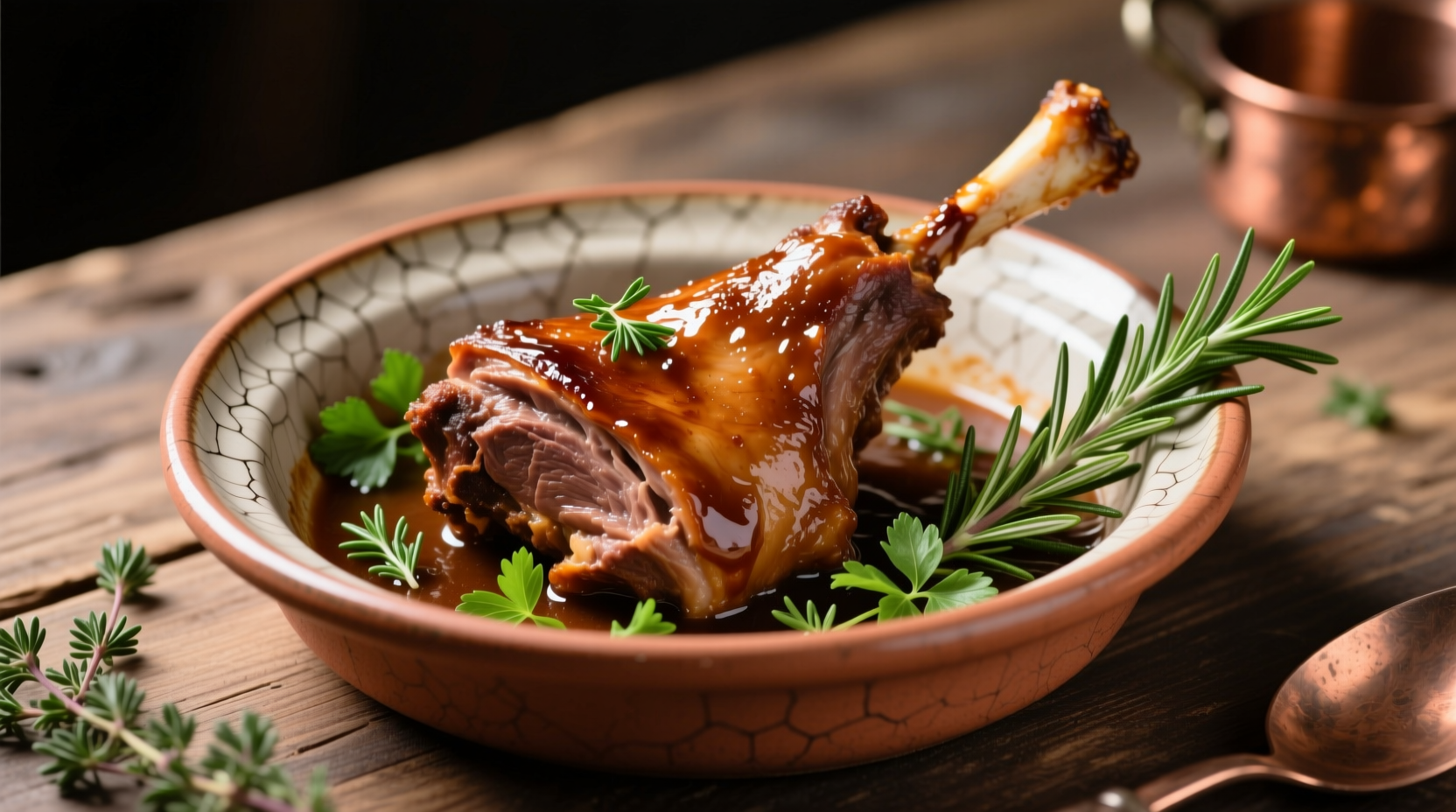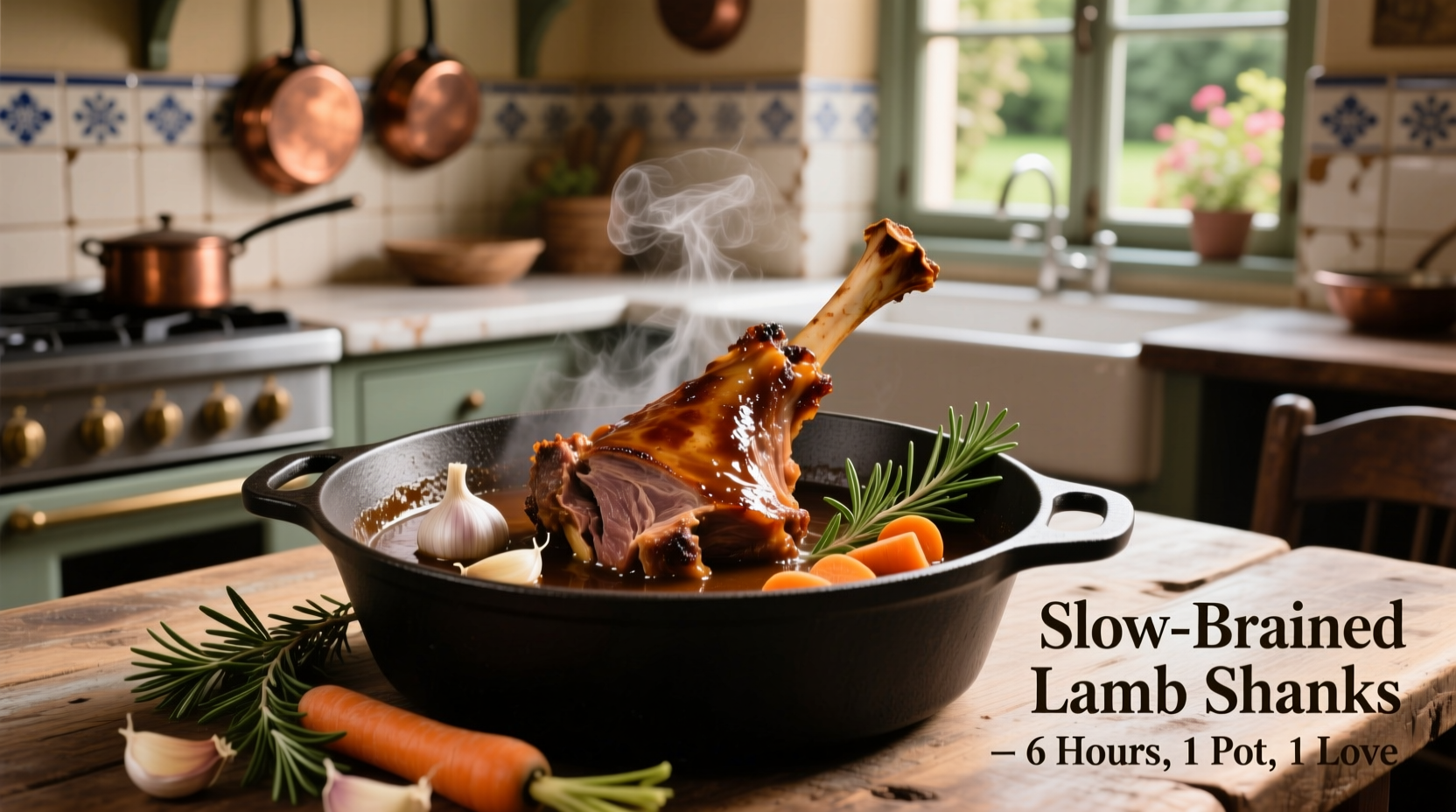Nothing says comfort food quite like a perfectly cooked lamb shank. That moment when the meat pulls away from the bone with just a gentle nudge—that's the magic of proper braising. After testing dozens of methods in professional kitchens and home stoves, I've perfected a reliable approach that guarantees tender, flavorful results every time. Whether you're cooking for a special occasion or weeknight dinner, this guide delivers restaurant-quality lamb shanks without the restaurant price tag.
Why Lamb Shanks Deserve Your Attention
Lamb shanks come from the lower leg, making them naturally tough but incredibly flavorful. This cut contains abundant collagen that, when cooked properly, transforms into silky gelatin. The USDA recommends cooking lamb to 145°F (63°C) for safety, but shanks require much higher temperatures to break down connective tissue—typically 190-205°F (88-96°C) internally for optimal tenderness.
Your Step-by-Step Cooking Journey
Preparation: Setting Up for Success
Start with quality ingredients—look for shanks with pinkish-red meat and creamy white fat. Trim excess fat to prevent greasiness, but leave enough for flavor. Pat the shanks completely dry; this crucial step ensures proper browning. Season generously with kosher salt and freshly ground black pepper at least 30 minutes before cooking to allow seasoning penetration.
The Browning Process: Building Flavor Foundation
Heat 2 tablespoons of olive oil in a heavy Dutch oven over medium-high heat until shimmering. Sear shanks for 3-4 minutes per side until deeply browned. Don't rush this step—proper browning creates the Maillard reaction that develops complex flavors. Remove shanks and set aside while you build your aromatic base with onions, carrots, celery, and garlic.

Braising Liquid Science: Getting the Ratio Right
The liquid-to-meat ratio makes or breaks your dish. For two standard shanks (about 1¼ lbs each), use 2 cups liquid total. Combine equal parts:
- Rich stock (lamb or beef)
- Acidic component (red wine or tomato)
| Cooking Method | Time Required | Temperature | Best For |
|---|---|---|---|
| Oven Braising | 2–2½ hours | 325°F (163°C) | Hands-off cooking, even heat |
| Stovetop Simmering | 2–2½ hours | Low simmer | Immediate monitoring |
| Instant Pot | 45 minutes + release | High pressure | Time-constrained cooks |
The Critical Cooking Phase: Patience Pays Off
Cover tightly and transfer to a preheated oven at 325°F (163°C). Cook for 2-2½ hours until the meat pulls away easily from the bone. Resist the urge to check frequently—each peek releases precious heat and steam. The collagen breakdown process requires consistent, gentle heat. When properly cooked, the internal temperature should reach 195°F (91°C), though a fork test is more reliable than thermometer readings for this cut.
Finishing Touches: Elevating Your Dish
Remove shanks carefully and keep warm. Skim excess fat from the braising liquid, then reduce by simmering uncovered for 10-15 minutes until slightly thickened. This concentrates flavors and creates a luxurious sauce. For extra richness, whisk in 1 tablespoon of cold butter at the end. Return shanks to the reduced sauce just before serving.
Troubleshooting Common Challenges
Problem: Meat remains tough after recommended time
Solution: Continue cooking in 15-minute increments. Different ovens vary, and shank size affects timing. The meat is done when it offers no resistance to a fork.
Problem: Sauce lacks depth
Solution: Add a teaspoon of tomato paste during the browning stage next time, or finish with a splash of balsamic vinegar to brighten flavors.
When This Method Works Best
This braising technique shines with standard 1¼-1½ lb shanks. For larger restaurant-style portions (2+ lbs), extend cooking time by 30-45 minutes. Avoid this method for pre-cut shank slices—those work better for quick-searing applications. The technique also adapts well to various flavor profiles: swap red wine for coconut milk and curry spices for an Asian-inspired version.
Serving Perfection: Pairing Suggestions
Serve shanks over creamy polenta, mashed potatoes, or roasted root vegetables that can soak up the rich sauce. A medium-bodied red wine like Cabernet Sauvignon complements the dish beautifully. For leftovers, the meat pulls apart easily for sandwiches or salads—the flavors deepen overnight, making leftovers even better than the initial meal.











 浙公网安备
33010002000092号
浙公网安备
33010002000092号 浙B2-20120091-4
浙B2-20120091-4